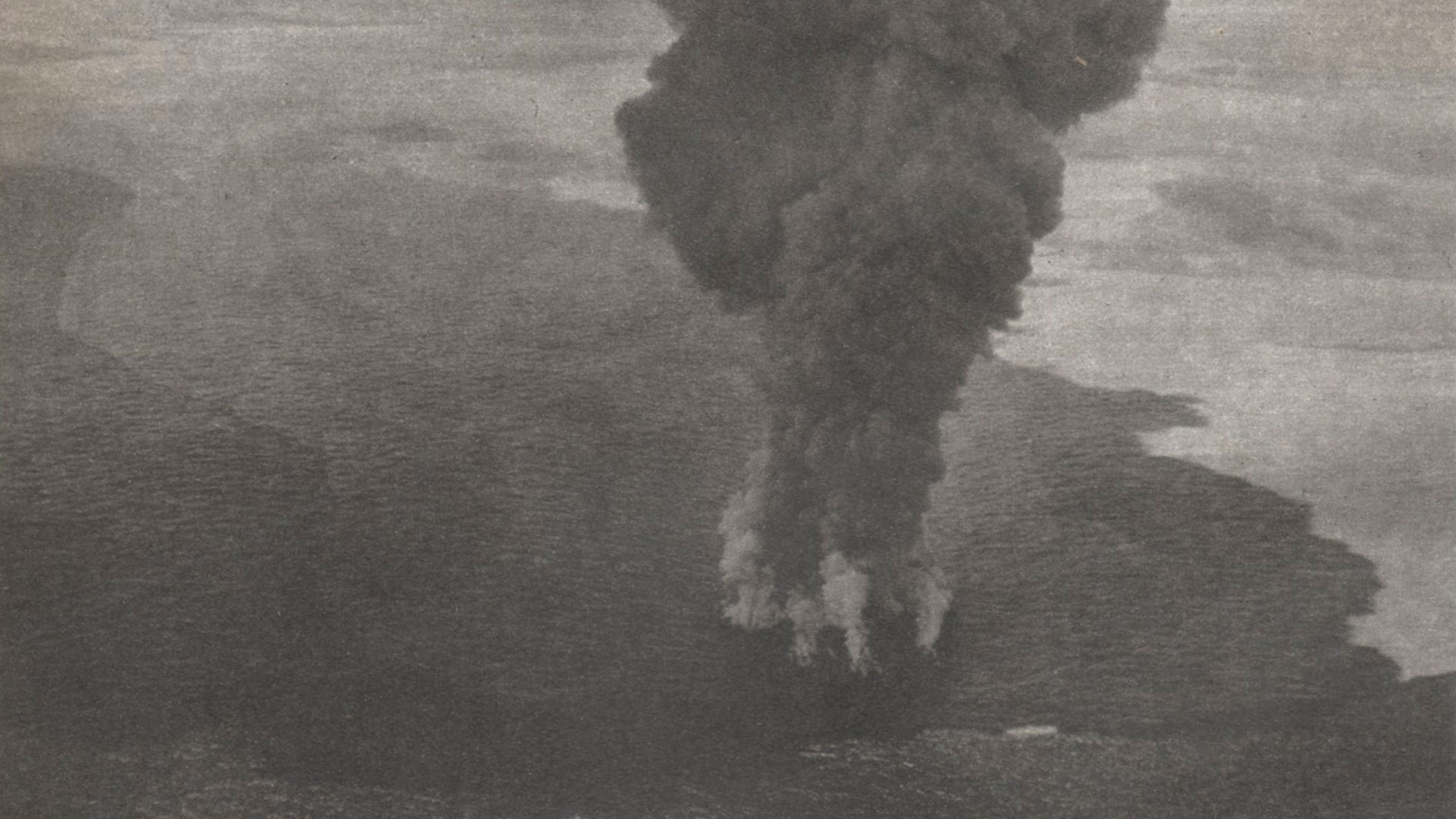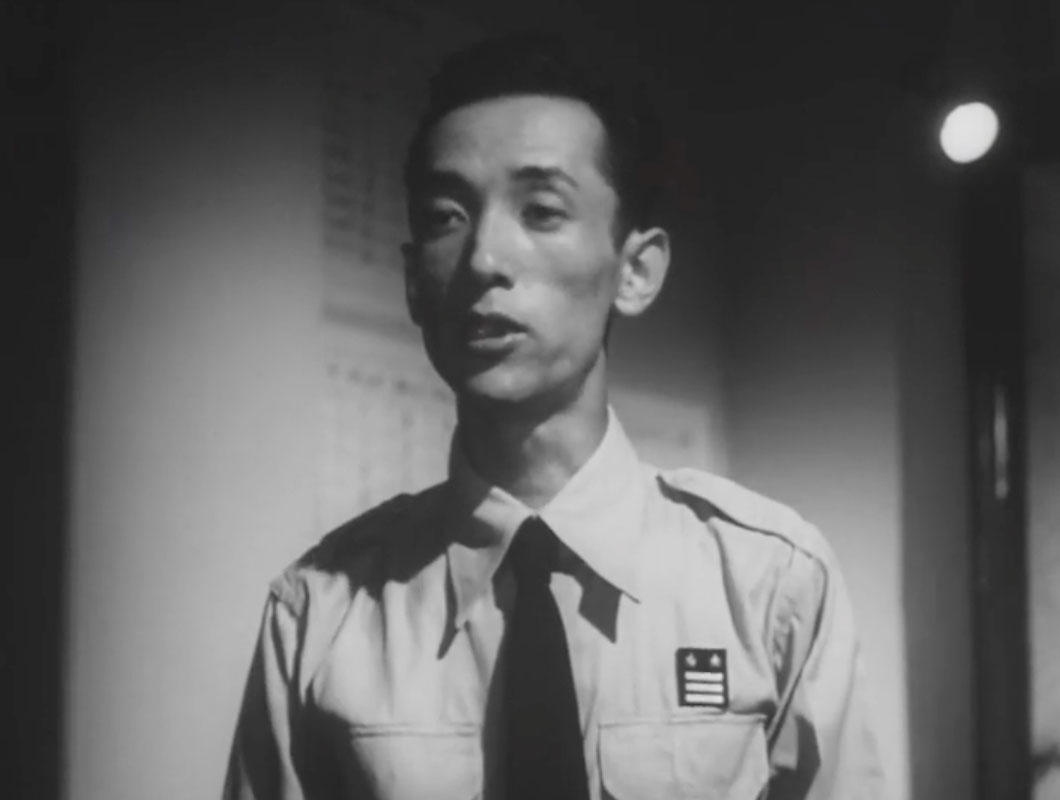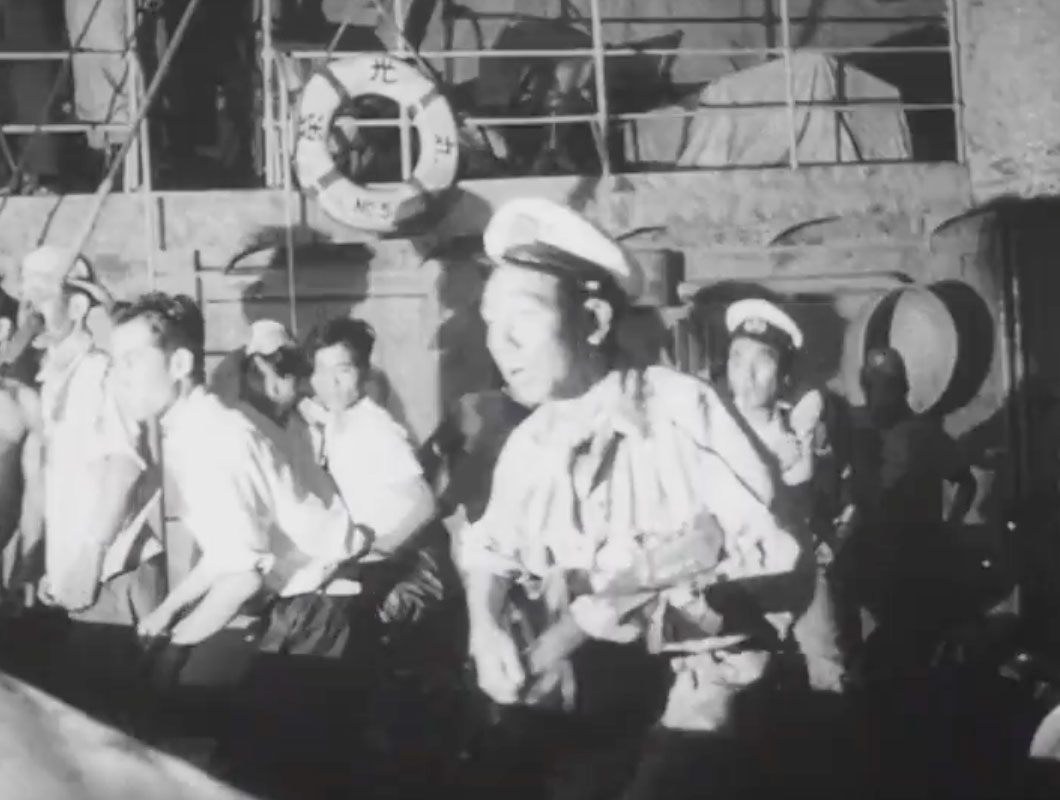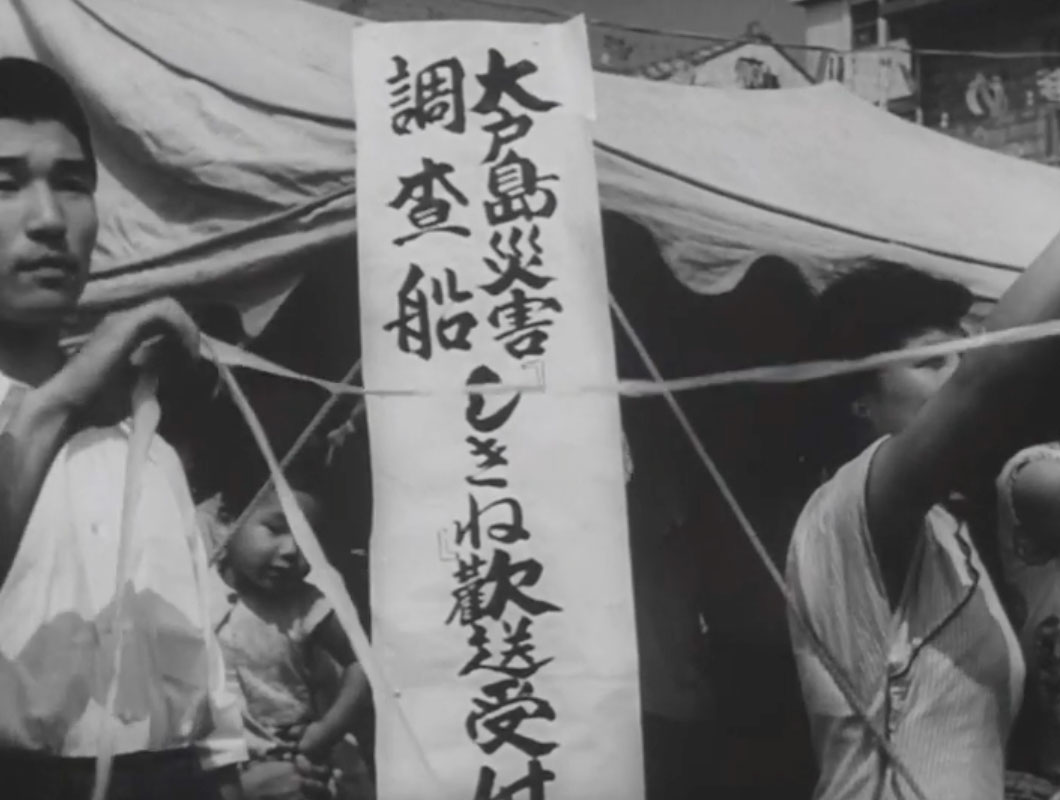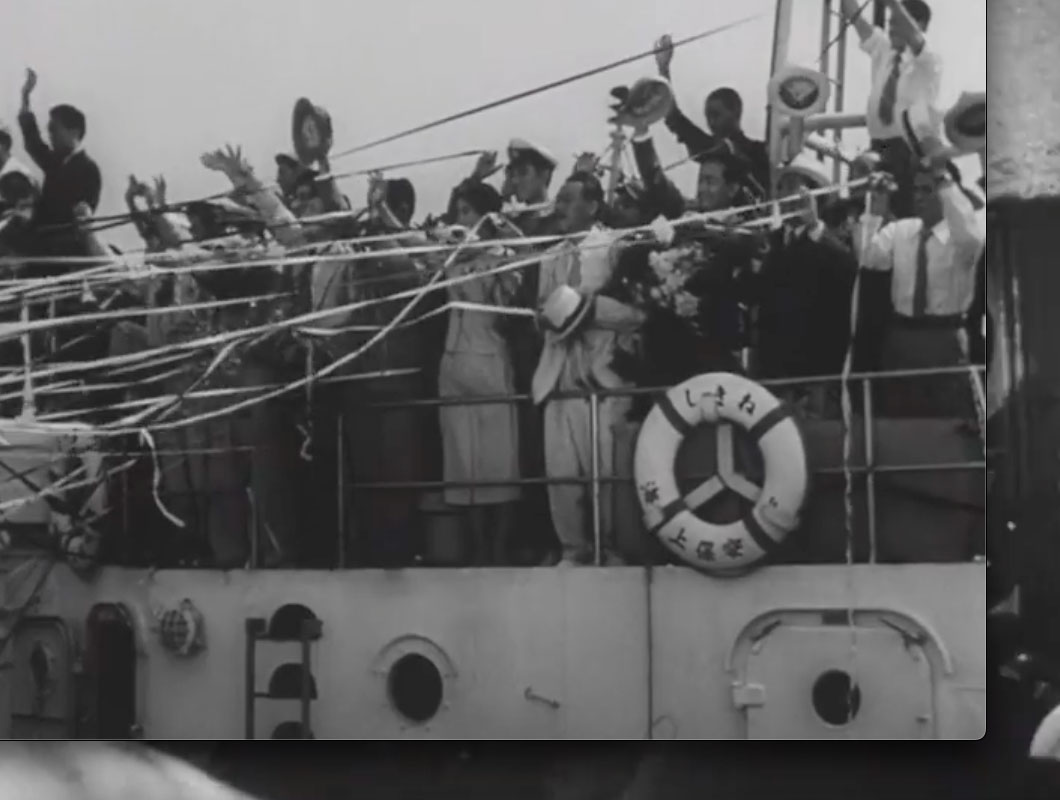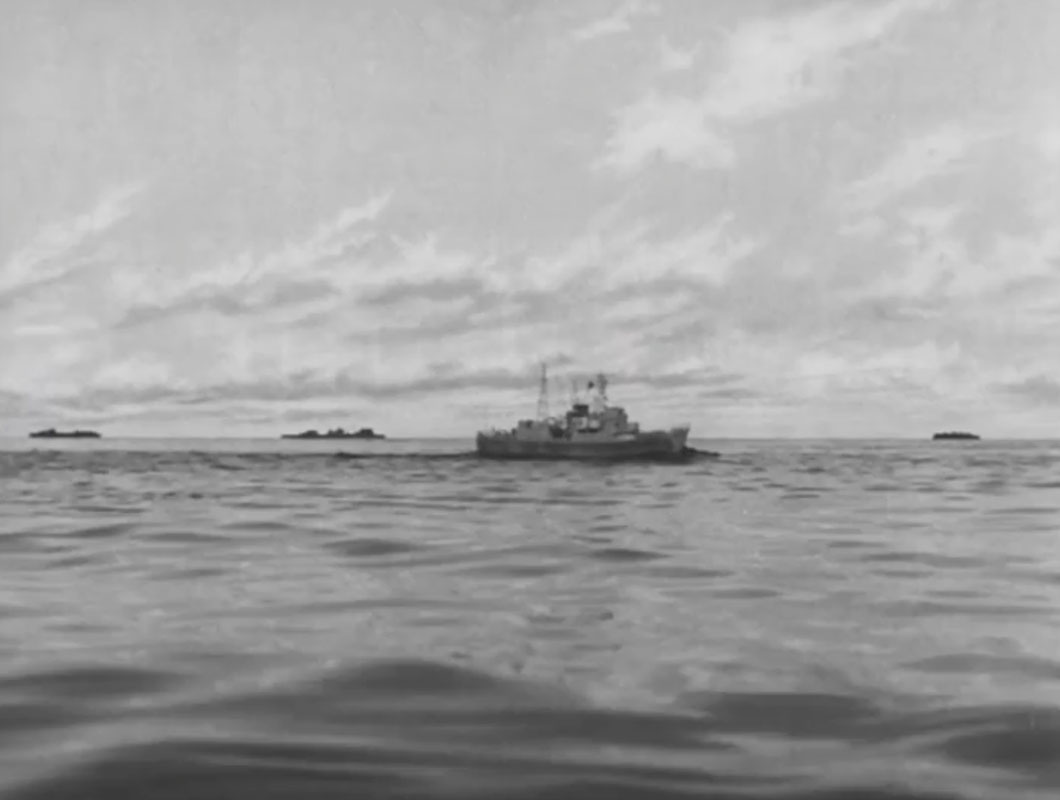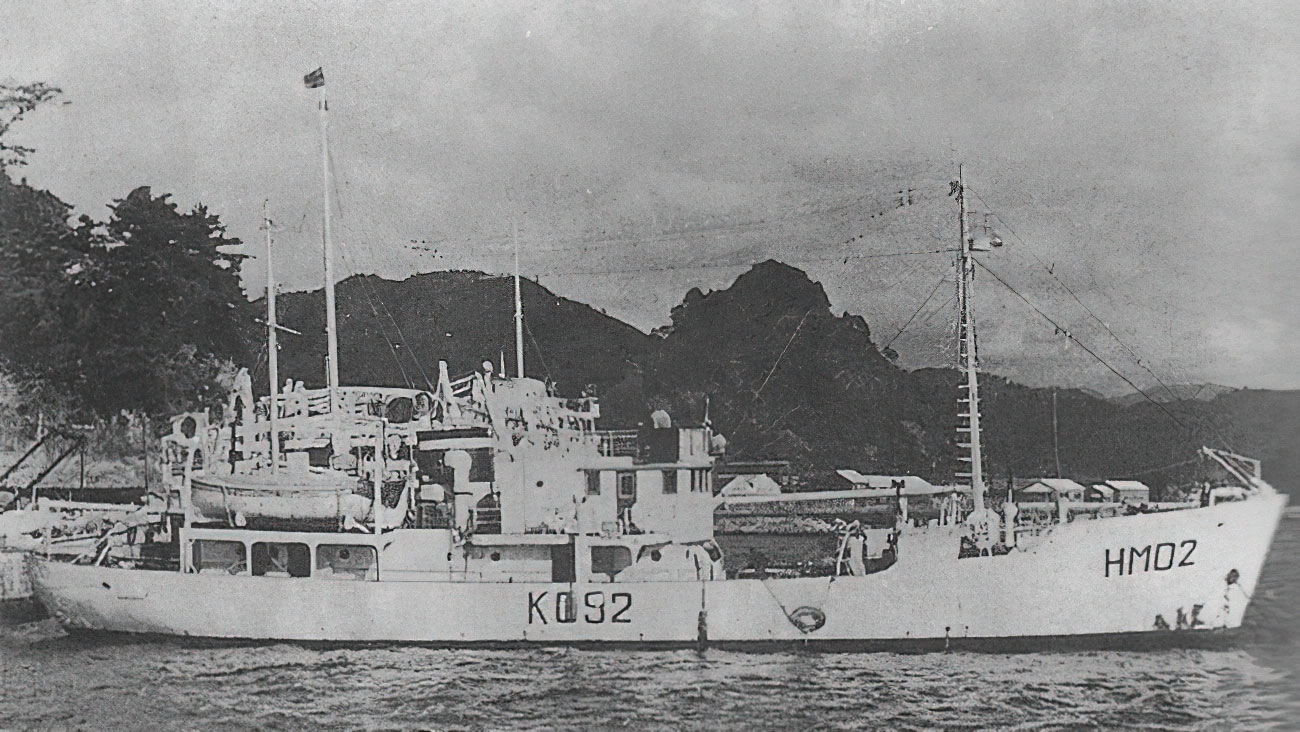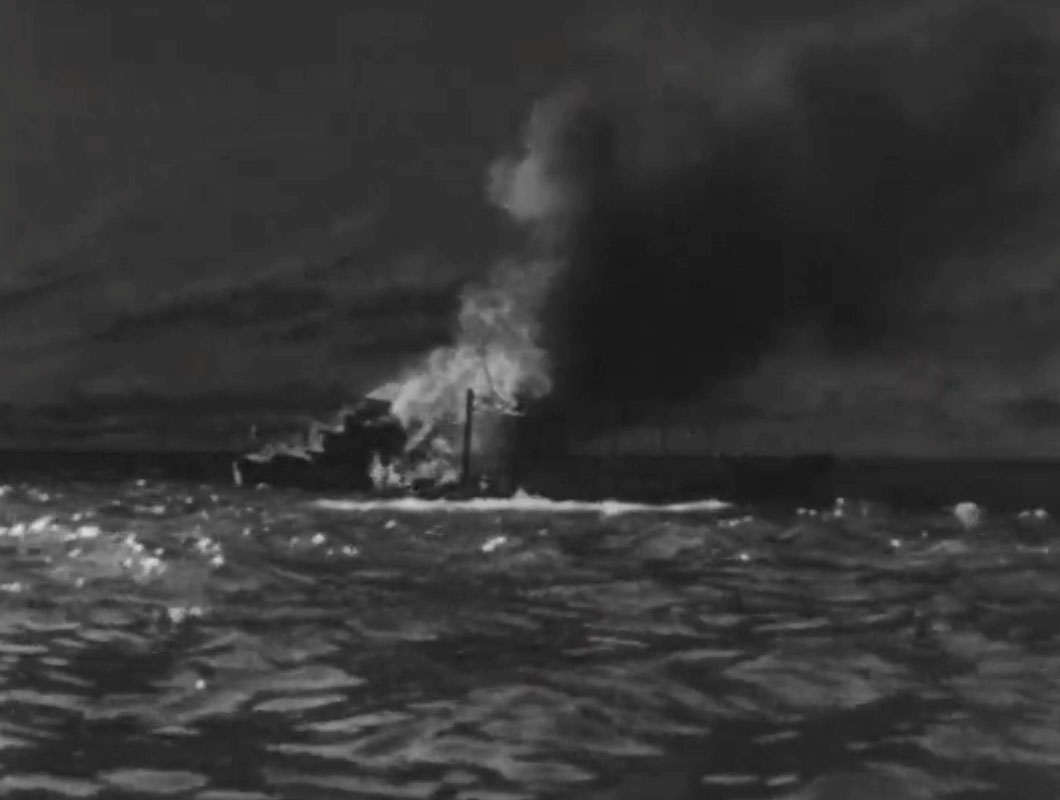On September 24, 1952, the oceanographic and weather research ship Kaiyo-Maru No. 5 (第五海洋丸) was dispatched but suddenly disappeared. An initial search found no remains of the ship and no cause was unknown. Later, a survey buoy, ship fragments, and a life preserver with the ship’s name written on it were found floating on the sea.5 False such of U.S. warships colliding and of a Soviet submarine sinking among other rumors circulated. It was determined that the ship was destroyed by the volcano, sunk by water and tephra, killing its crew of 31 including nine research scientists.6 On December 22, The Japan Coast Guard commission concluded: “At around 12:20 on September 24, 1952, the Survey Vessel No. 5 Kaiyo-Maru of the Hydrographic Department of the Japan Coast Guard received an explosion from a submarine volcano from the starboard obliquely downward direction while working near Myojin-Sho, and the starboard side of the upper structure was damaged. The ship was almost destroyed and scattered, and the hull immediately capsized and sank.” (“Daigo Kaiyo-Maru Distress Investigation Report” p.8)7 The ship’s destruction stands out as an example of a volcanic eruption killing at one time such a large number of volcanologists and engineers engaged in observational research primarily.
